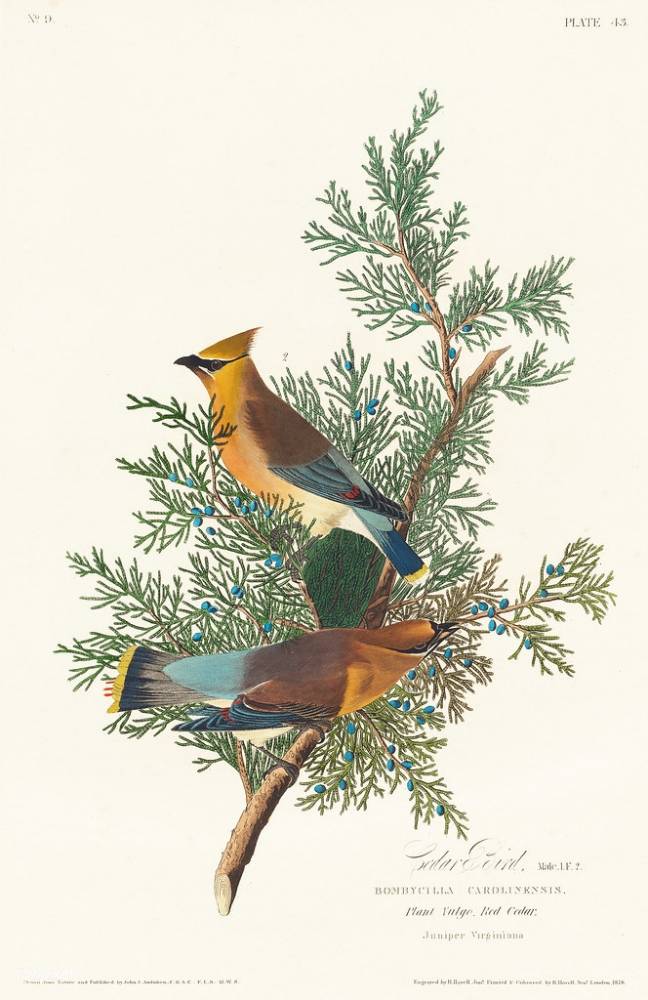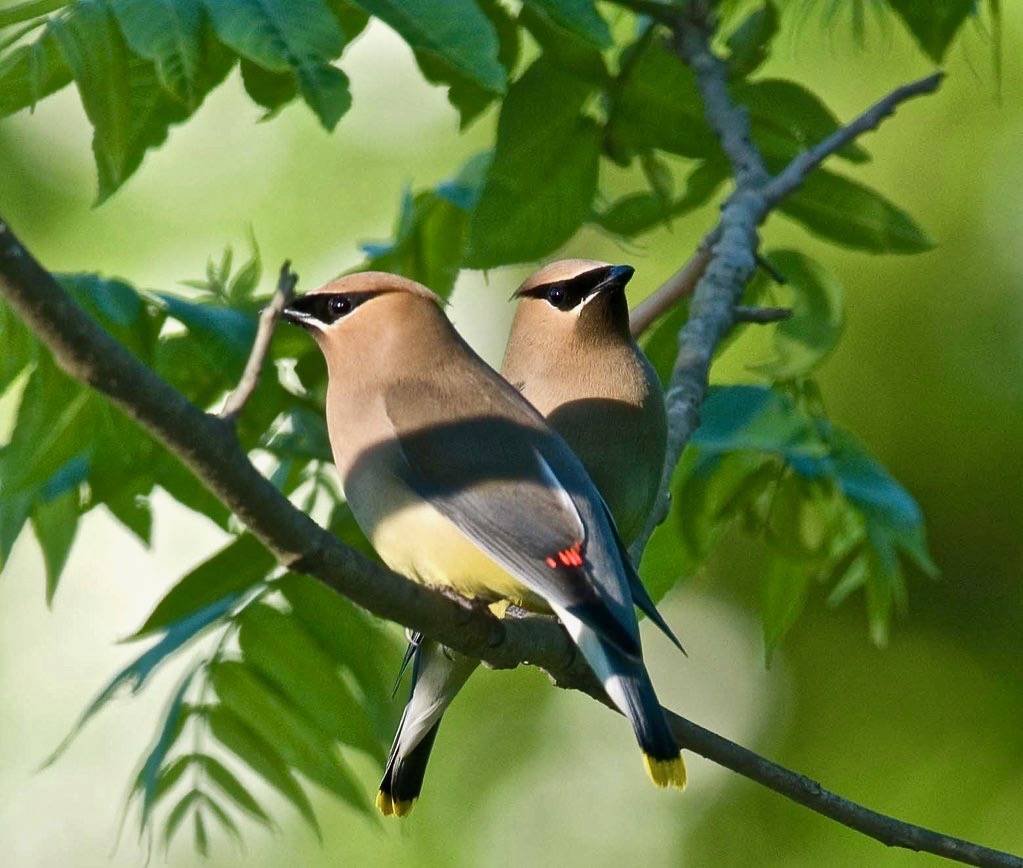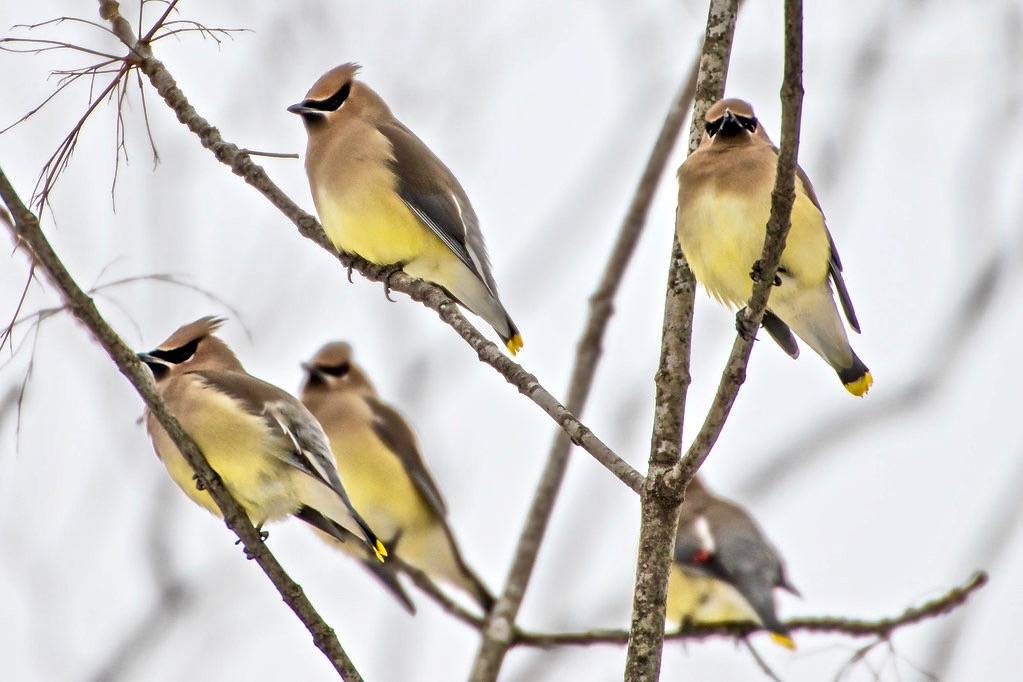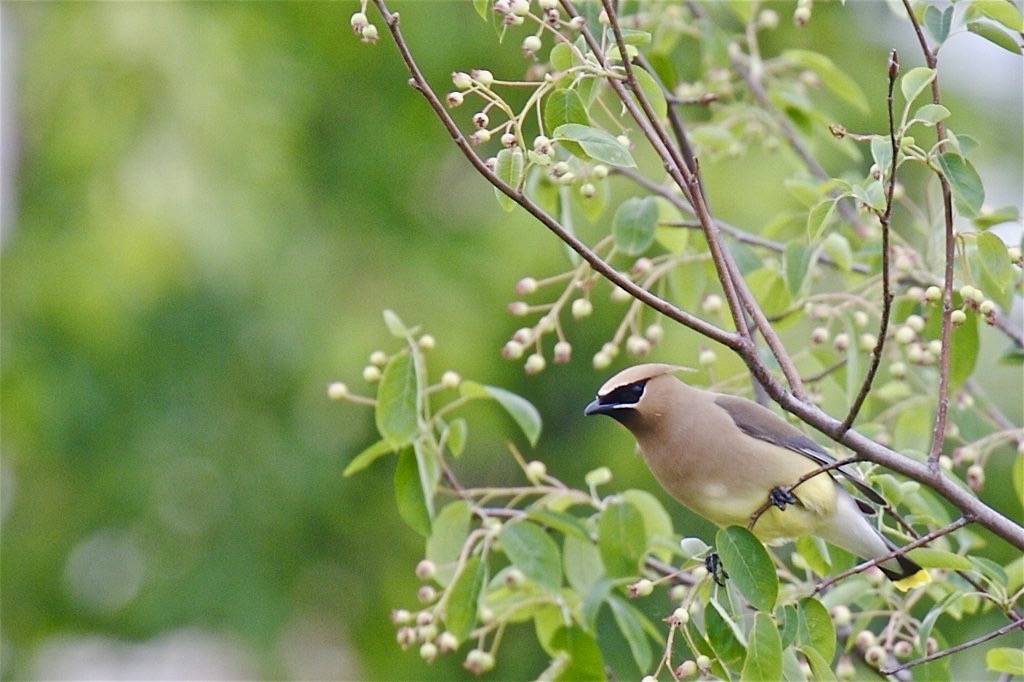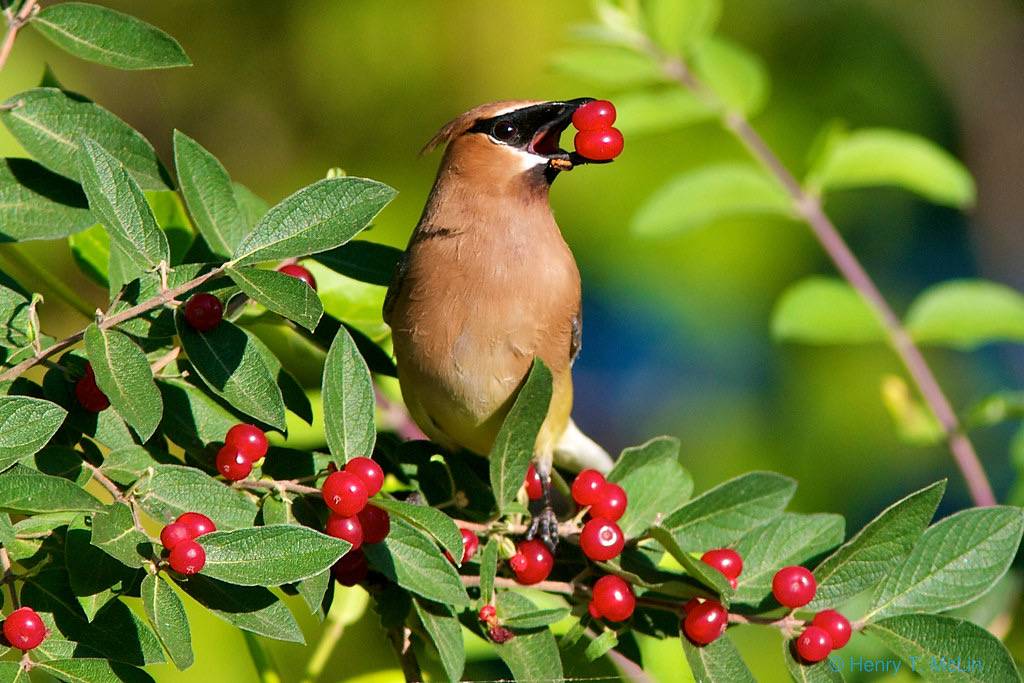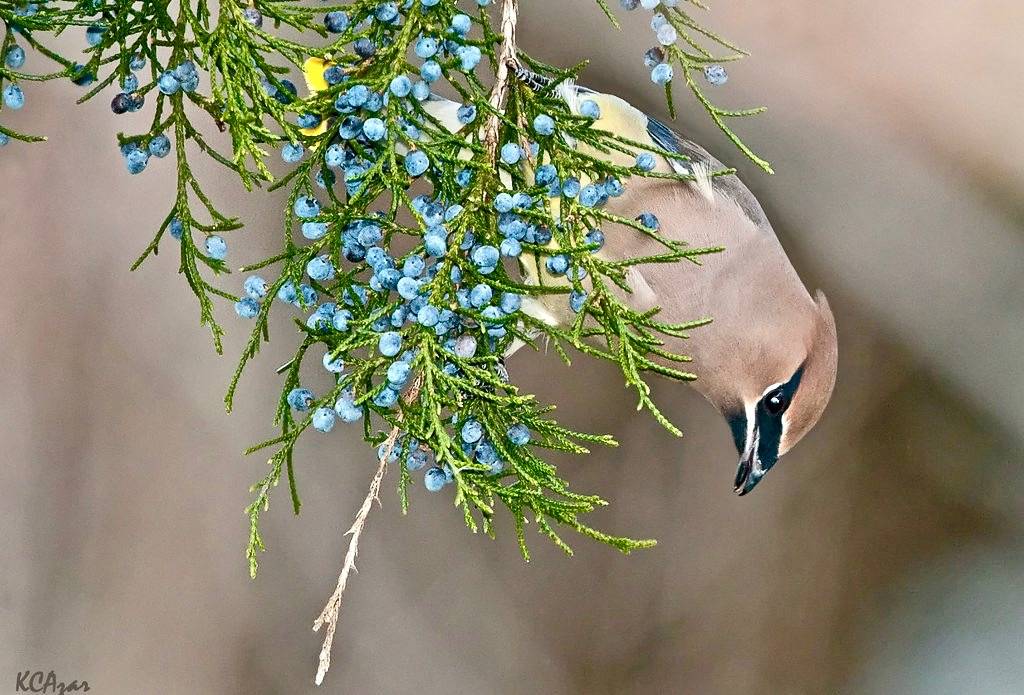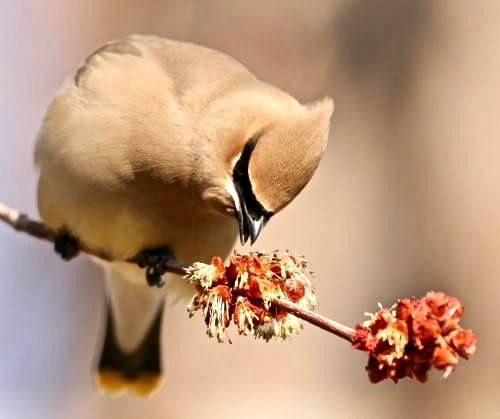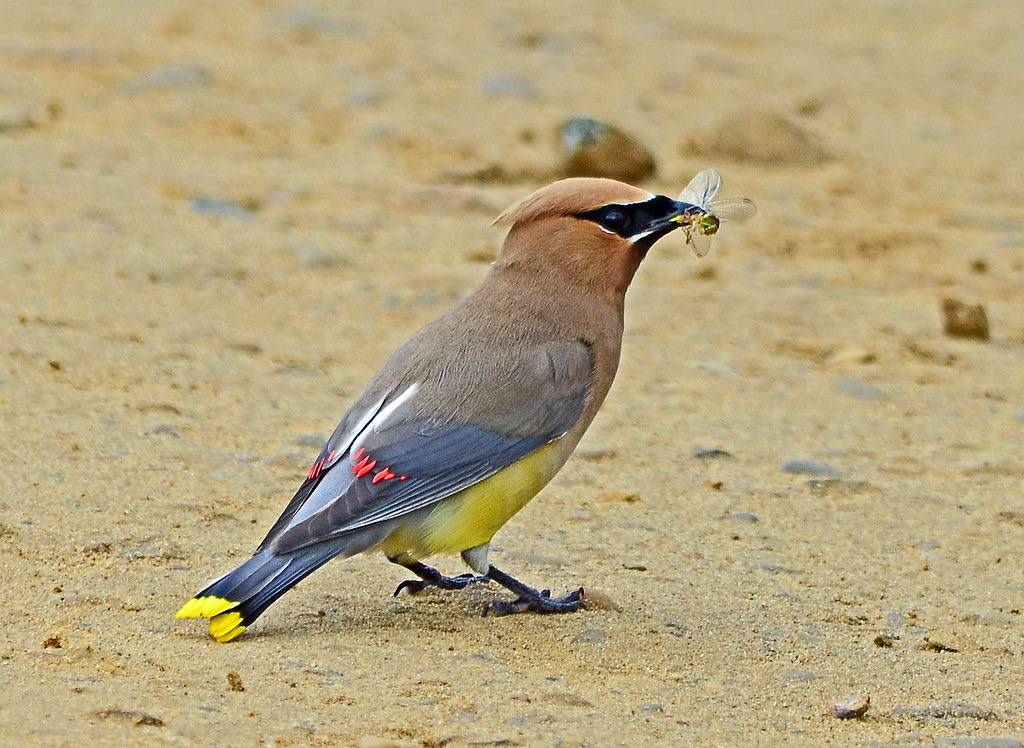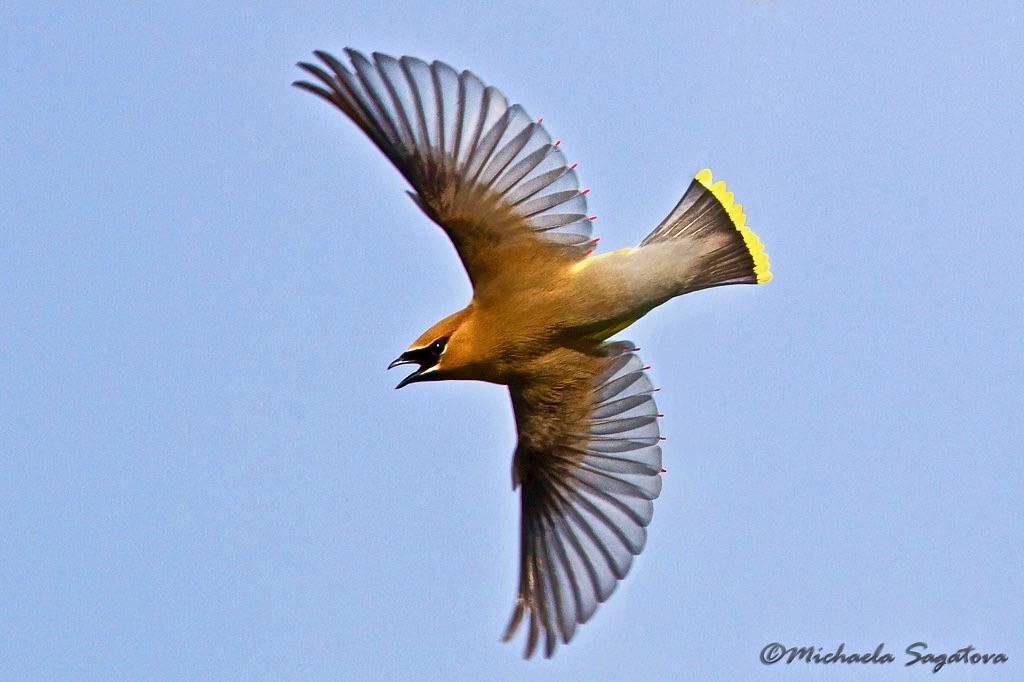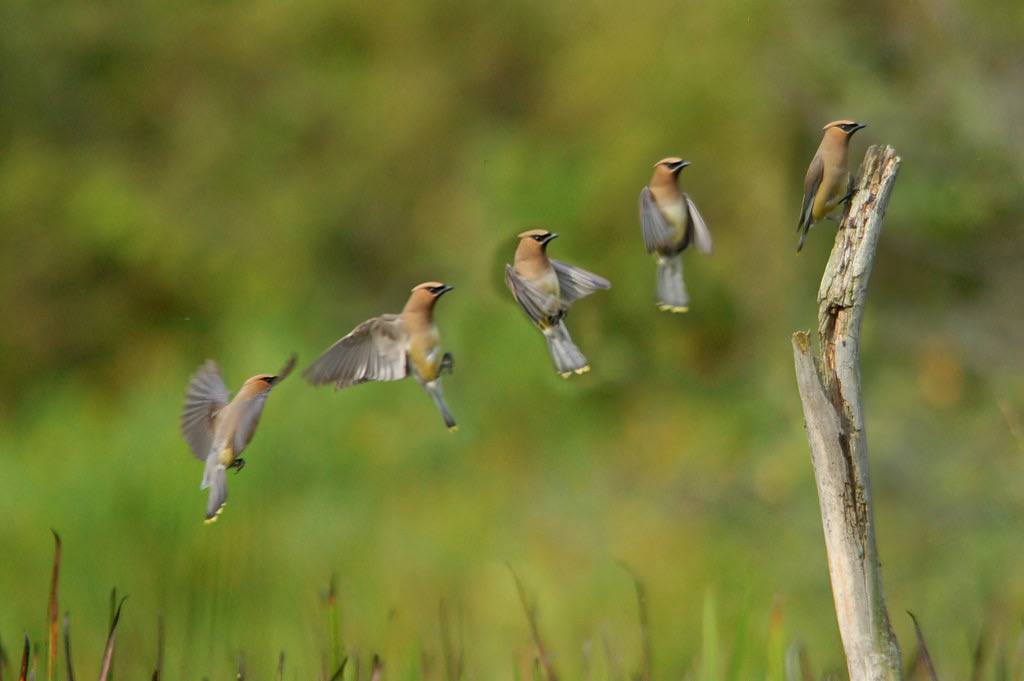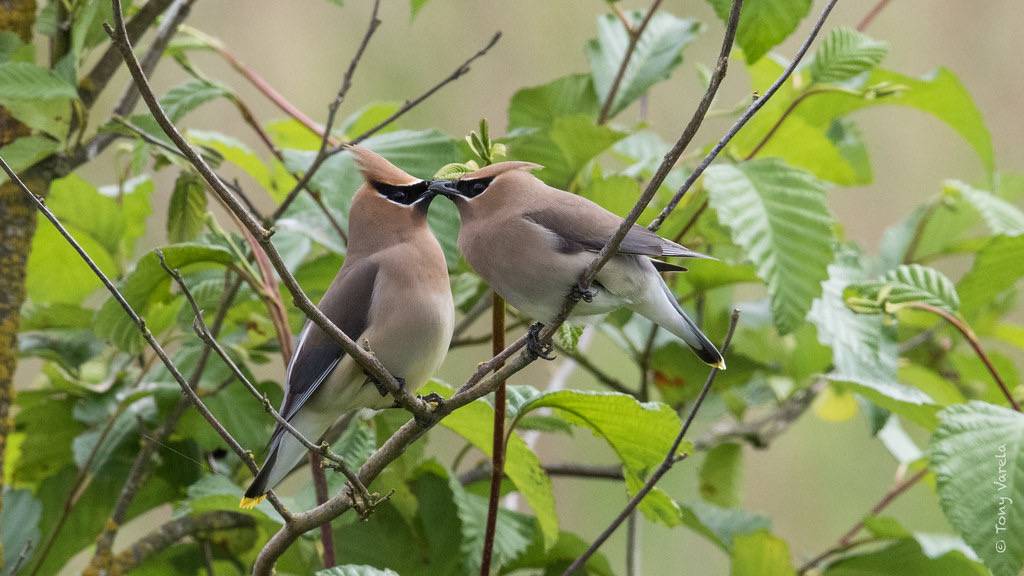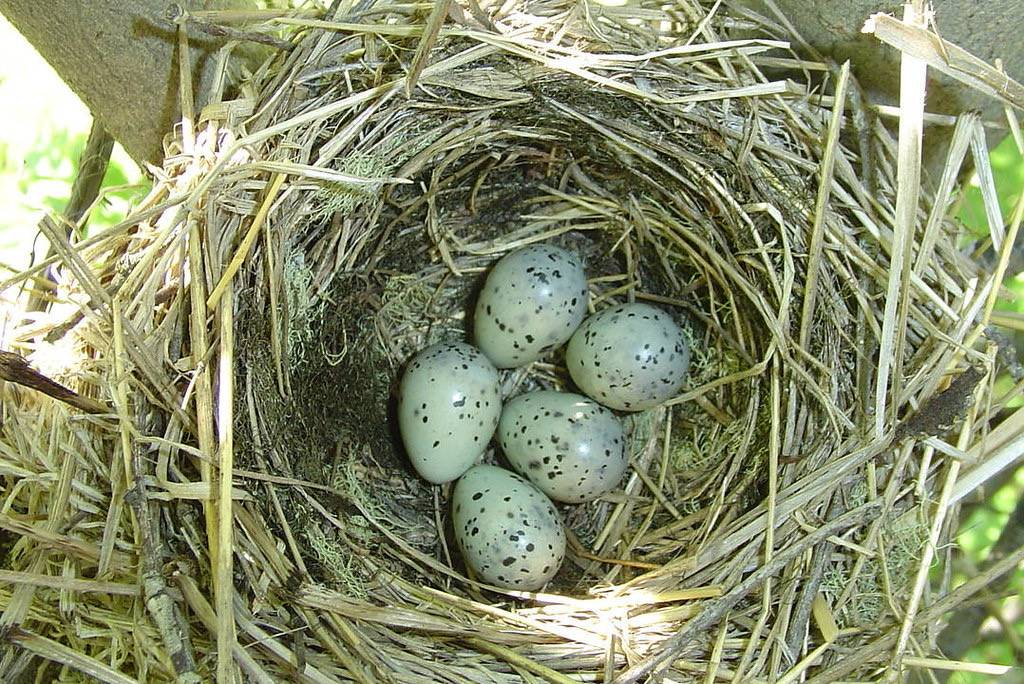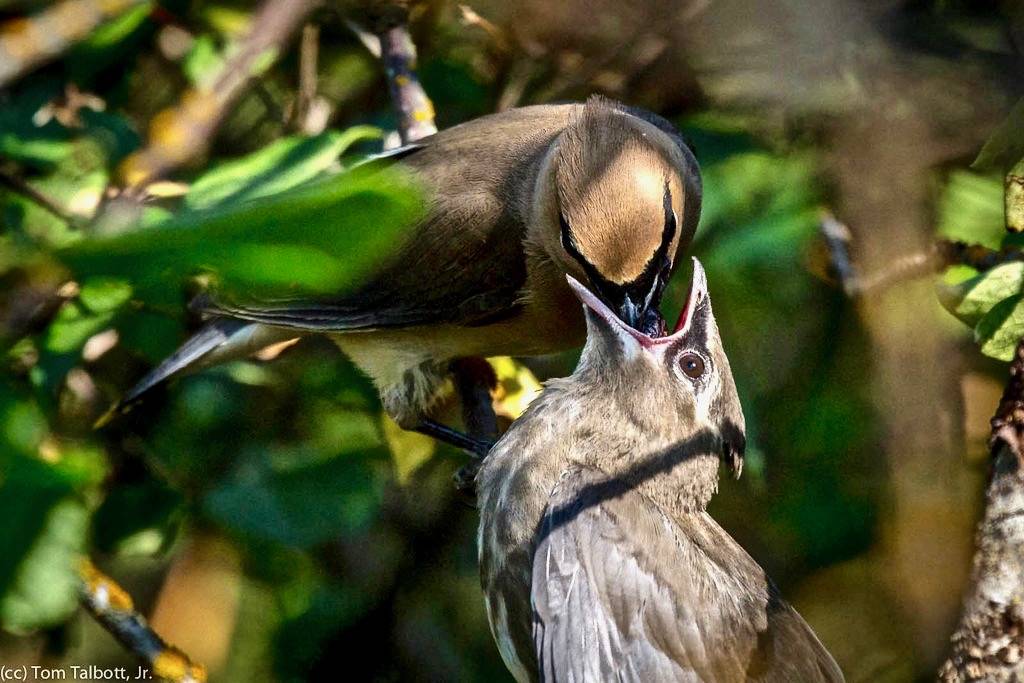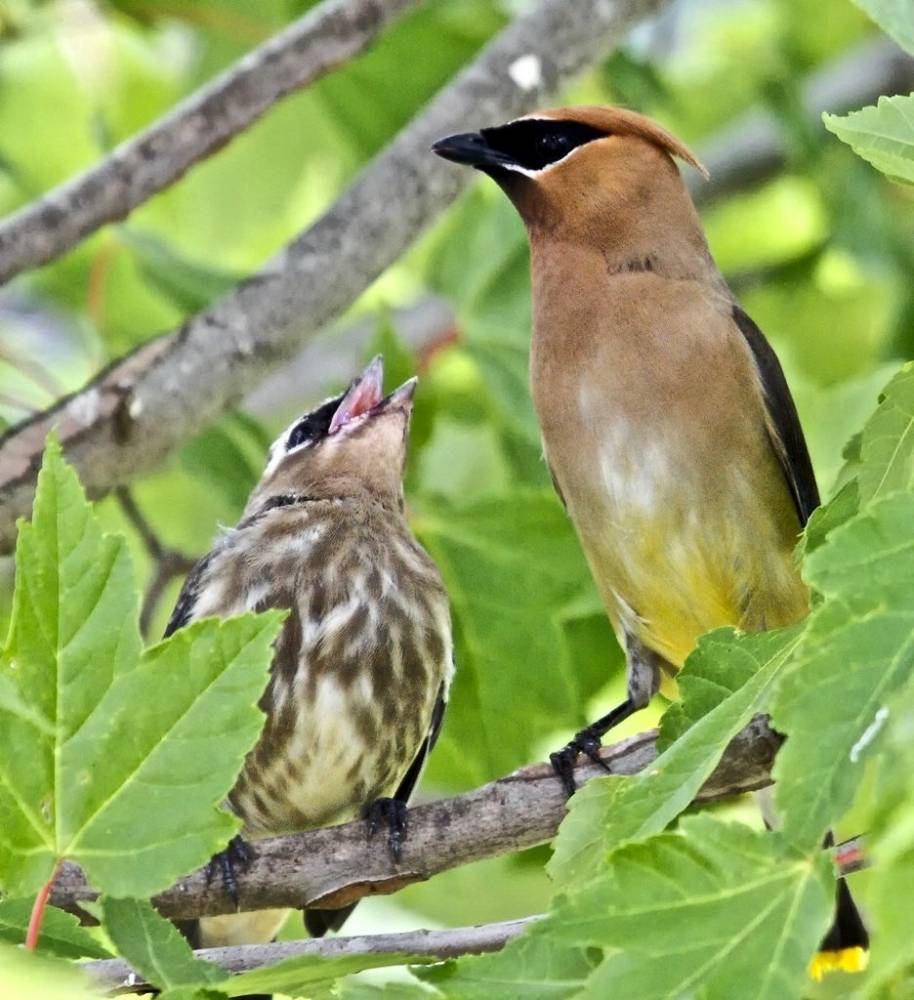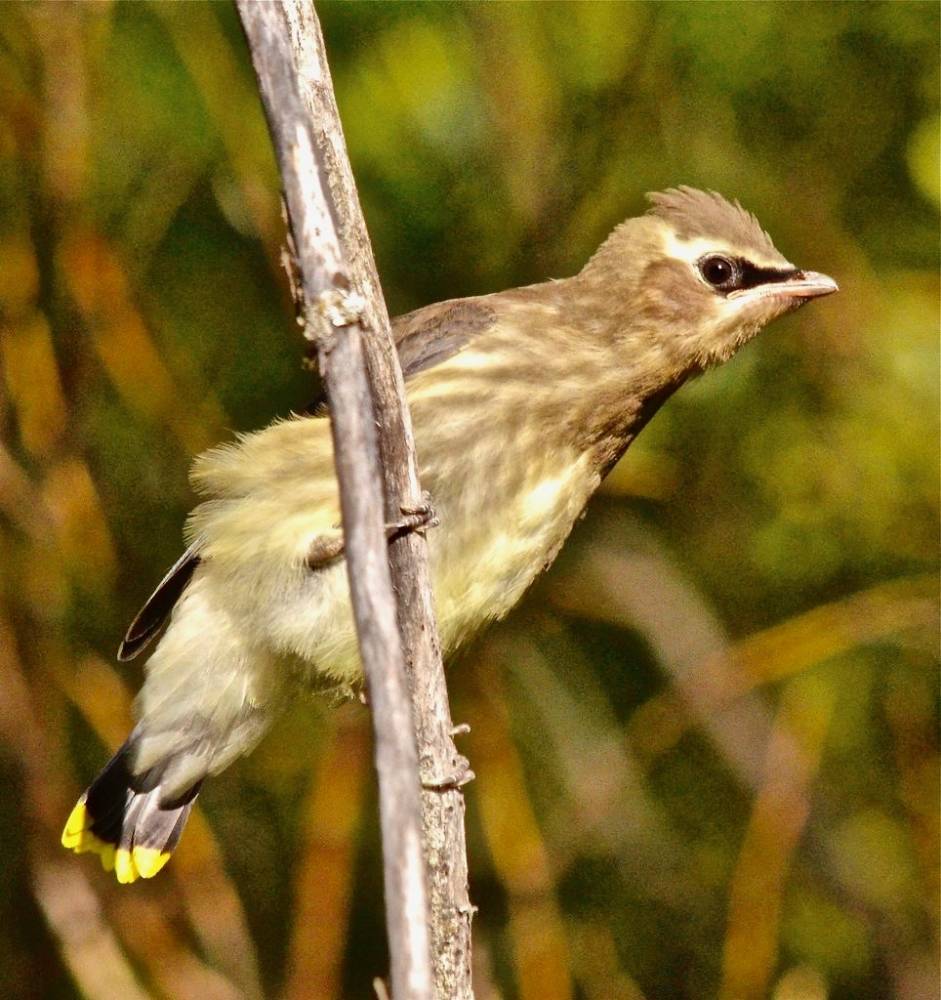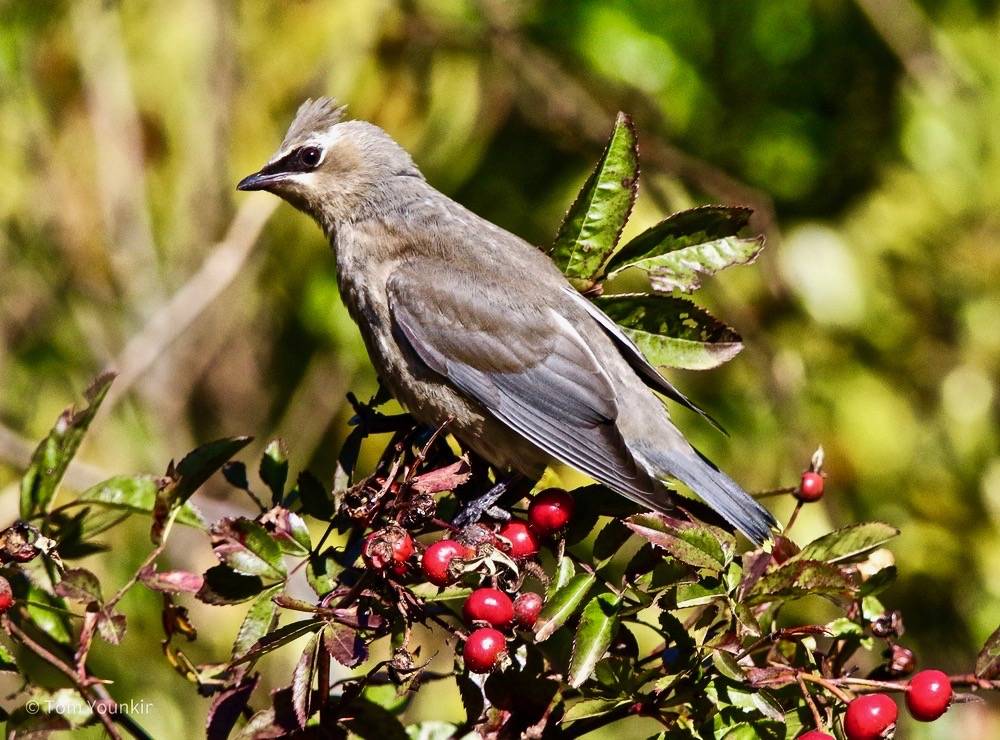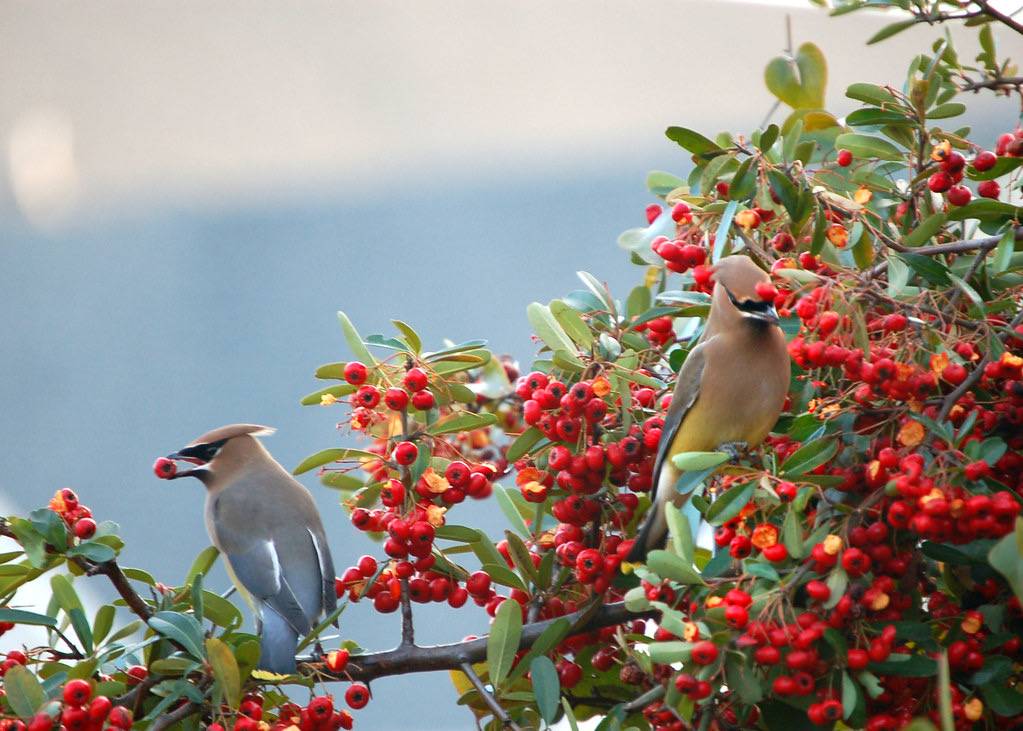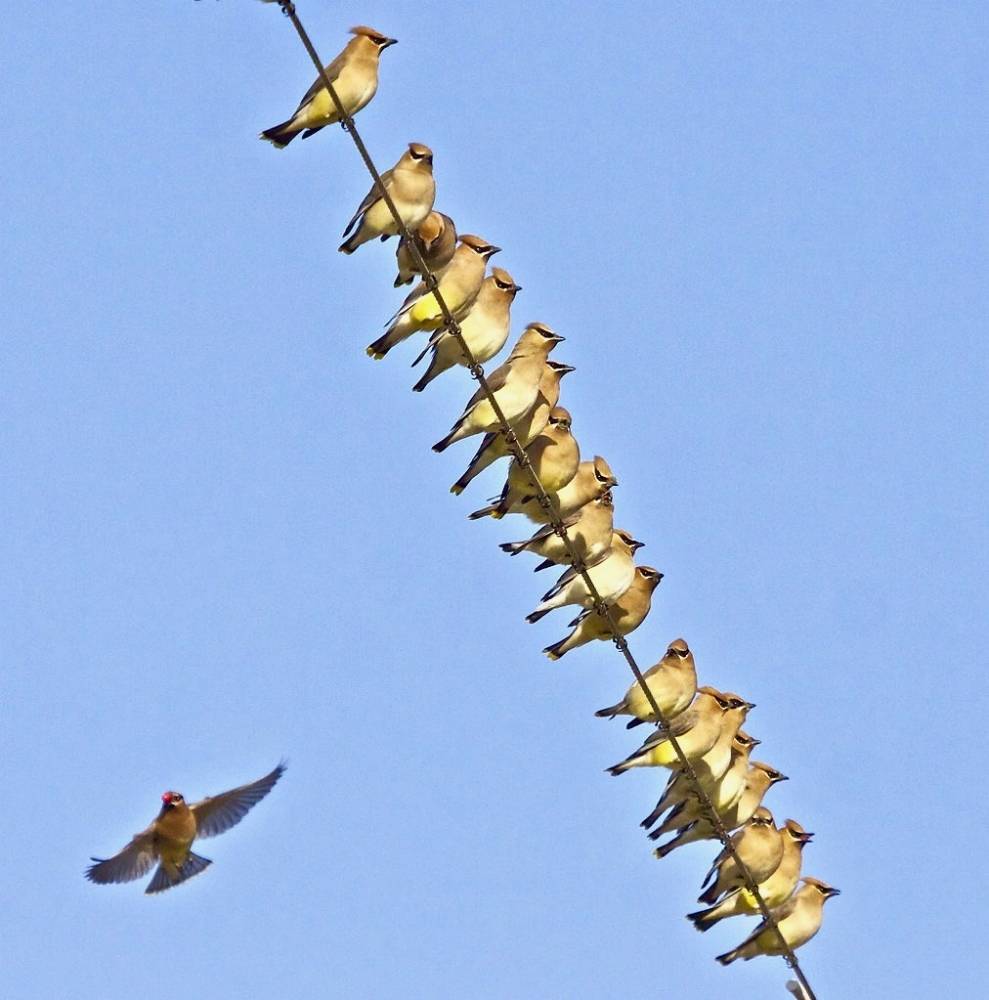Cedar Waxwing
The Cedar Waxwing is a frugivore and favors small fruits produced by plant species such as cedar, cherries, dogwood, honeysuckle, serviceberry, and winterberry. It is not a commonly seen bird at Salter Grove but has been observed feeding on trees and shrubs along the Marsh Trail or on the edge of woods near the parking lot.
Cedar Waxwings breed in open woodland or the edges of forested areas in the southern half of Canada and the northern half of the United States. They are nomadic outside of the breeding season and movements of the large flocks that sometimes form are determined by fruit availability. Migrating individuals may reach as far as northern South America.
In the 1960's observers noted orange instead of the usual bright yellow in the tail tip of waxwings. This was coincident with the widespread establishment of Morrow's honeysuckle, an introduced species, as a landscaping plant in the northeastern United States. A red pigment in the fruit turns the yellow tip to orange when a bird feeds on this species while growing tail feathers.

